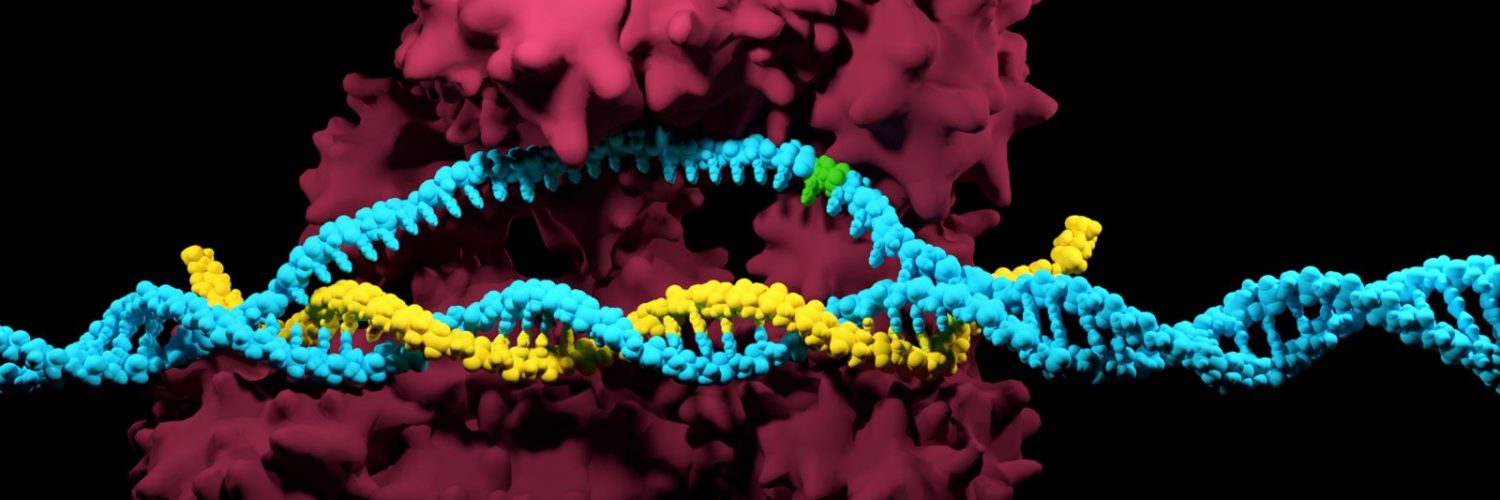by Bill Wilson
Jennifer’s father just died from complications of cystic fibrosis, not long after her mother was diagnosed with early Alzheimer’s. Jennifer is still young, recently married. In fact, her and her husband were considering starting a family soon.
Now, she’s not sure she wants children. She can’t imagine her own children suffering from the debilitating effects of scar tissue and cysts in the lungs. She doesn’t even want to think of what could happen if she herself were diagnosed with Alzheimer’s.
But what if she could have children with no risk of these hereditary diseases? What if she and her children could be spared the same fate as her parents? What if these diseases—or every disease—could be eradicated through a genetic-altering process called CRISPR?
It started with yogurt.
In the mid-2000s, the bacteria Streptococcus thermosphilus, a strong probiotic strain, was sequenced and studied. S. thermosphilus is found in dairy products and eats lactose in milk, excreting lactic acid. Scientists discovered that the bacteria had an unusual repeating DNA sequence and was able to protect itself from viruses.
Like humans, many types of bacteria have strong immune systems and safeguards against viral invades. One of the most common defenses is to make a copy of the attacking virus’ DNA and store it in a theoretical biochemical database. If the virus attacks the bacteria again, this stored information enables the bacterial cell to recognize and destroy the virus immediately.
The repeating genetic code, called CRISPR (clustered regularly interspaced palindromic repeats) protected S. thermosphilus from viruses that attacked it. In other words, it helped protect yogurt and cheese cultures in many products on the market today.
Cut – copy – paste.
In 2012, researchers discovered how to emulate CRISPR’s abilities; this became a game-changer for genetic engineering. Researchers were able to add a new step in the CRISPR process: after DNA is sliced away and removed, a new DNA sequence with “fixed” genes could take its place in the cut space.
This is the equivalent of the cut-copy-paste features of many word processing and graphic software: locate a sentence or section of a drawing you want to change, cut the portion and remove it, then paste in the replacement. Copy this new sentence or image everywhere it’s needed.
As a result of this new genetic engineering, any undesirable or unwanted gene could be removed and replaced with a more desirable one.
Limitless wonder…
These modern gene editing techniques have inspired intense reactions among proponents and critics alike.
CRISPR and other similar technologies have the potential to cure diseases and extend the human life span. Researchers have used CRISPR to create musclebound pigs and eradicate the HIV virus in infected humans.
Imagine if diseases like cancer or Alzheimer’s could be eradicated. People with cataracts or degenerative eye diseases could see again. The deaf could hear. Speech impediments could be a thing of past generations.
On average, “22 people die each day waiting for organ transplants” because of shortages in healthy organs. What if old or damaged organs could easily be fixed with CRISPR? What if there was never a shortage or donor organs because scientists could genetically modify pig organs so that human bodies would never reject them?
CRISPR advantages and benefits are not limited to just humans:
– Extinct or critically endangered species could be brought back.
– Dog breeds, such as Dalmatians, could be rid of inherited diseases.
– Farm crops could be genetically altered to resist diseases, repel bugs, and thrive in drought-riddled areas. The USDA has already given a pass for gene-edited crops.
– Fermentation processes can take microbes like brewer’s yeast and program them to create designer chemicals and materials like insulin and ethanol.
– Disease carrying female mosquitoes could be sterilized.
Imagine CRISPR being used to create self-healing concrete, fire-resistant building materials, and fully biodegradable plastics. There seems to be no limit on the possibilities and benefits.
…and horror.
The power to wield and rewrite Nature’s playbook brings a host of concerns from critics and some fear that genetically-engineered cures will lead society down a slippery slope.
If gene editing can eliminate diseases and is considered ethically and morally okay, what’s to prevent CRISPR or other similar technologies from taking it a step further?
Designer babies could destroy human evolution. What if humans could remove ugly traits like spindly limbs and beer bellies? What would stop some couples from creating only blue-eyed, blonde-haired babies or ethnically-pure offspring? How about a child who’s an Olympic-level athlete with an IQ of 300 or one with grateful, well-behaved, and compliant genes who has a reverence for authority? How complacent would children become?
If personality traits can be edited with CRISPR, what would stop a country’s dictator from harnessing the gene editing technology and forcing the creation of obedient super-soldiers? How would that be different from what the Nazis and Hitler tried to accomplish during World War II?
What about genetically engineering pets or super-breeds? China has experimented with dog breeds, such as beagles, and have made them more muscular. What if anyone could custom order a designer pet for the right amount of money?
Could CRISPR and gene therapy techniques actually cause cancer and other deformities? For example, by picking and choosing which genes to repair and fix reproductive organs, would scientists create “faulty” cells linked to ovarian or prostrate cancer?
In July 2018, scientists discovered greater genetic damage in cells than previously thought. In a study involving both mouse and human cells, CRISPR “frequently caused extensive mutations” to the DNA. They found many cells had DNA deletions and insertions in the sequences.
World changes are on the horizon.
CRISPR and other gene editing or modifying technologies is nothing short of world-changing. They are nothing short of inevitable.
Gene editing will become commonplace in the near future. It’s already in use in crops, dairy products, and livestock. As with other modern-era advancements, preventing CRISPR is—and will be—impossible.
Custom-made children and pets are still a possibility. As is eradicating hereditary diseases. Countries have the ability to develop either utopias or dystopias within the next few generations. One thing’s for certain: checks and balances will be required to prevent abuse or disasters from striking.






Add comment